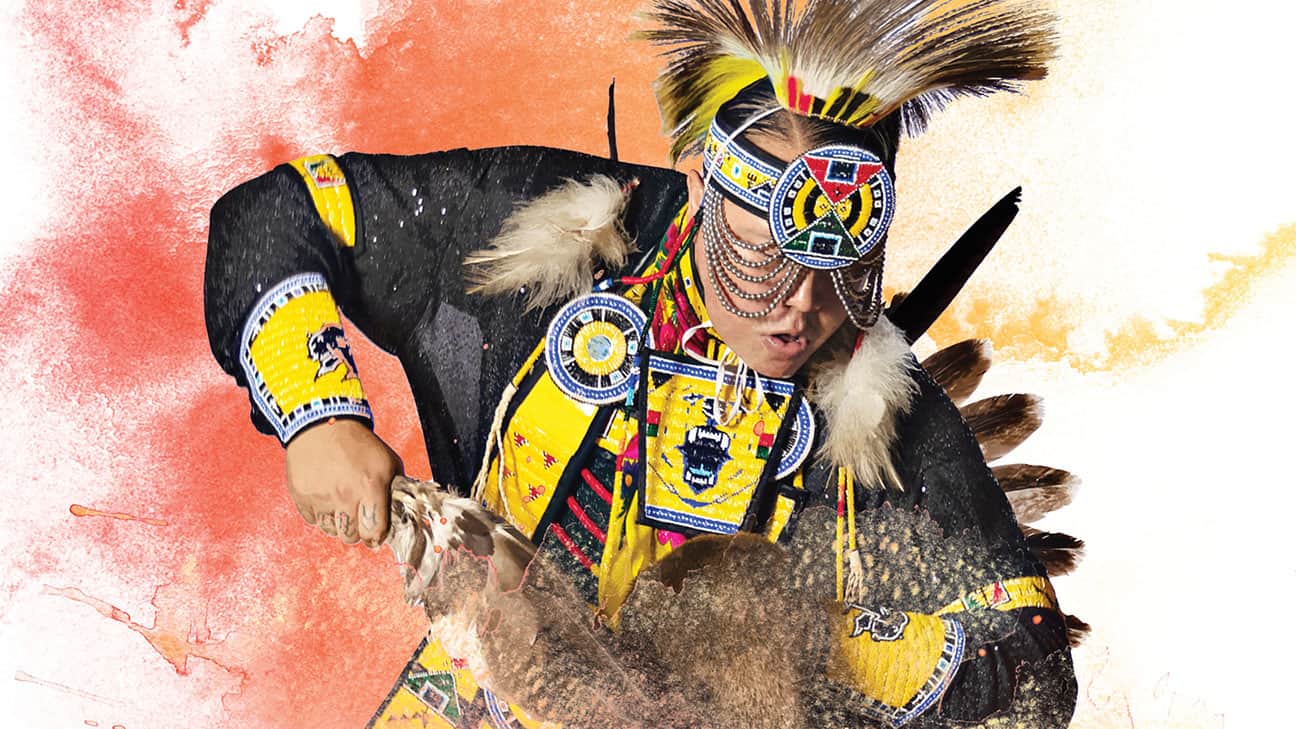![]()
Forget the well-trodden paths of conventional tourism for a moment. Instead, imagine standing on ground that has witnessed millennia of human history, where the very earth holds the echoes of creation stories and the intricate patterns of ancient civilizations. Welcome to Nanih Waiya, the Sacred Mound of the Choctaw Nation, nestled deep in Winston County, Mississippi. This isn’t just a geographical point on a map; it is a spiritual nexus, offering an unparalleled, profound glimpse into the pre-contact world of the Choctaw people, directly linking to the ancient settlement patterns mapped by anthropologists and, more importantly, preserved in the oral traditions of a vibrant, enduring culture.
The Sacred Heart of a Nation
Nanih Waiya, often referred to as the "Mother Mound," is the sacred heart of the Choctaw Nation. Its location, deep within what was once the expansive ancestral lands of the Choctaw, speaks volumes about its centrality. For the Choctaw people, Nanih Waiya is not merely an archaeological site; it is the place of emergence, the very womb from which their ancestors first stepped onto the earth. The Choctaw creation story, vibrant and enduring, tells of their emergence from the mound, led by a sacred pole that indicated where they should settle and establish their communities. From this sacred ground, they fanned out, creating the intricate tapestry of settlements, hunting grounds, and ceremonial sites that would characterize their pre-contact civilization.
This origin story is more than a myth; it is a foundational narrative that shapes identity, culture, and connection to the land. When scholars or archaeologists attempt to reconstruct pre-contact Choctaw settlement maps, Nanih Waiya invariably stands as the undeniable anchor, the primordial center from which all other points radiate. It wasn’t just a place where people lived; it was the place where life began, where the first breath was taken, and where the sacred fire of the Choctaw Nation was first lit.

A Journey Through Time: What You See and Feel
Approaching Nanih Waiya is an experience that immediately transports you. The mound itself, a massive earthen truncated pyramid, rises impressively from the surrounding landscape. It’s not as dramatically steep as some Mesoamerican pyramids, but its sheer scale and the palpable sense of age are awe-inspiring. Measuring approximately 25 feet high, 220 feet wide, and 140 feet long at its base, this colossal structure is a testament to the sophisticated engineering, organized labor, and profound spiritual commitment of the people who constructed it over centuries, possibly even millennia, beginning around 300 CE during the Mississippian period.
Walking around its base, or if permitted, ascending its gentle slopes, you feel the weight of history underfoot. The quiet is profound, broken only by the rustle of leaves or the call of a bird. This isn’t a bustling tourist attraction; it’s a place of reverence and contemplation. The air seems to hum with an ancient energy, a sense of timelessness that few places can evoke. You can almost visualize the ceremonial processions, the gatherings, the daily life that once pulsed around this sacred center. It demands respect, and in return, it offers an unparalleled connection to the past.
The surrounding Nanih Waiya State Park is relatively undeveloped, which only enhances the authenticity of the experience. There are no elaborate visitor centers or gift shops to distract from the mound’s solemn presence. Instead, you’ll find a tranquil, forested environment, much like the ancient Choctaw would have known. This raw, unspoiled setting encourages visitors to engage directly with the land, to imagine the dense forests, the winding streams, and the fertile river valleys that sustained the Choctaw people for countless generations. The absence of modern distractions allows the imagination to take flight, bridging the gap between the present and the pre-contact world.

Understanding Pre-Contact Choctaw Life Through Nanih Waiya
Nanih Waiya wasn’t an isolated monument; it was the vibrant heart of a thriving cultural landscape. When we examine archaeological findings and ethnographic maps of pre-contact Choctaw settlements, we see patterns radiating outward from such central ceremonial complexes. These maps reveal a sophisticated network of dispersed agricultural communities, smaller hamlets, and seasonal hunting camps, all spiritually and culturally anchored by sites like Nanih Waiya.
The construction of such a monumental earthen structure speaks volumes about the societal organization of the pre-contact Choctaw. It required a centralized leadership, the coordination of vast amounts of labor, and a shared communal vision – evidence of a complex social hierarchy that transcended simple subsistence living. The mound served as a focal point for spiritual ceremonies, communal gatherings, and possibly as a burial ground for revered ancestors or leaders. It was a place where the physical and spiritual worlds converged, where the living communicated with their ancestors and the divine.
Agriculture was the bedrock of this settled life. The Choctaw, like many Mississippian cultures, were skilled farmers, cultivating maize, beans, and squash – the "Three Sisters" – which provided a stable food supply, allowing for permanent settlements and the development of rich cultural practices. The fertile lands surrounding Nanih Waiya, watered by the tributaries of the Pearl and Tombigbee Rivers, would have been ideal for these agricultural pursuits. Pre-contact settlement maps, therefore, aren’t just dots on a page; they represent a deep understanding of ecology, resource management, and sustainable living, with communities strategically located near water sources and arable land.

Beyond agriculture, these maps also hint at extensive trade networks that connected the Choctaw with other indigenous groups across the Southeast. Materials like copper, mica, and shells, found in archaeological contexts, indicate a vibrant exchange of goods, ideas, and technologies. The spiritual and ceremonial significance of Nanih Waiya would have also made it a place of pilgrimage, drawing people from surrounding communities and reinforcing cultural cohesion. The enduring power of oral tradition, passed down through generations, has preserved the memory of this intricate pre-contact world, even in the absence of written records, painting a vivid picture of a people deeply connected to their land and their heritage.
The Enduring Legacy: Why Visit Now?
To visit Nanih Waiya today is to connect with an enduring legacy. Despite the forced removal of the Choctaw people to Oklahoma in the 19th century, Nanih Waiya remains profoundly sacred to them. The Mississippi Band of Choctaw Indians, who remained in their ancestral lands, continue to hold this site in deep reverence, actively working to protect and preserve it. Their continued connection to this land, against immense historical odds, underscores its irreplaceable significance to their identity.
In an age where indigenous histories are often generalized or overlooked, Nanih Waiya offers a powerful, tangible antidote. It challenges preconceived notions of "primitive" societies, showcasing instead a civilization of profound spiritual depth, sophisticated social organization, and impressive engineering capabilities. It’s a living testament to the resilience and richness of Native American cultures.
For the modern traveler, a journey to Nanih Waiya is more than a historical excursion; it’s a personal pilgrimage. It offers an opportunity for quiet reflection, to ponder the immense sweep of human history, and to gain a deeper, more empathetic understanding of the land’s original stewards. It encourages us to look beyond the surface, to listen to the whispers of the wind, and to feel the weight of countless generations who considered this ground sacred. It can reshape one’s understanding of the American landscape, revealing layers of history often obscured by colonial narratives. It is a profound experience that lingers long after you’ve left.
Practical Travel Information

Nanih Waiya is located within Nanih Waiya State Park in Winston County, Mississippi. It is a place best visited with an open mind and a respectful heart.
- Location: While somewhat off the beaten path, it is accessible by car. Use GPS to navigate to Nanih Waiya State Park, Louisville, MS.
- Best Time to Visit: Spring and Fall offer the most pleasant weather for exploring the outdoor site. Summers can be hot and humid, and winters chilly.
- What to Bring: Comfortable walking shoes are essential. Bring water, especially during warmer months. A camera is welcome, but remember the sacred nature of the site. Binoculars can enhance wildlife viewing.
- Etiquette: This is sacred ground for the Choctaw Nation. Approach with respect and reverence. Stay on marked paths, do not disturb any part of the mound or its surroundings, and dispose of all trash properly. Noise should be kept to a minimum.
- Nearby Attractions: While Nanih Waiya itself is the primary draw, consider visiting the nearby Pearl River community, home to the Mississippi Band of Choctaw Indians. Their cultural center offers further insights into contemporary Choctaw life and history, providing a crucial link between the ancient past and the vibrant present.
Conclusion
Nanih Waiya is not just an earthen mound; it is a living monument, a sacred trust, and a profound testament to an ancient, vibrant culture that thrived for millennia on this land. A visit here is a journey into the very heart of the Choctaw Nation, offering a perspective on pre-contact settlement maps and societal structures that no academic text or two-dimensional drawing can ever truly convey. It is a reminder that history is not just in books, but in the earth beneath our feet, waiting to be respectfully discovered and understood. It is an experience that will enrich your travels and deepen your appreciation for the complex, enduring tapestry of human civilization.
